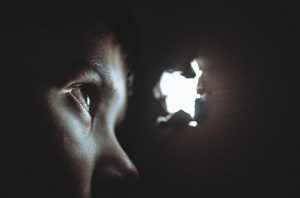 Anxiety disorders are the most commonly experienced mental health issues in the United States, affecting at least 40 million adults age 18 or older, or 18.1% of the population. According to the Centers For Disease Control and Prevention, one study found that 3% of children between the ages of 3 and 17 were diagnosed with an anxiety disorder.
Anxiety disorders are the most commonly experienced mental health issues in the United States, affecting at least 40 million adults age 18 or older, or 18.1% of the population. According to the Centers For Disease Control and Prevention, one study found that 3% of children between the ages of 3 and 17 were diagnosed with an anxiety disorder.
While 3% may not sound overwhelming, remember, these are children who have been diagnosed with a full blown anxiety disorder. If we were to look at the number of children who have ever struggled with anxiety instead, we suspect the number would be closer to 100%!
Partly, that’s because anxiety is a normal emotion that occurs when we anticipate something in the future. Some anxiety is actually beneficial, because it can help us prepare for what’s ahead. For example, if we never felt any anxiety, we probably wouldn’t study for tests. However, when anxiety becomes too powerful, it can wreak havoc on our lives.
Anxiety in children sometimes looks differently than it does in adults. Here are some ways that anxiety can manifest in little ones:
- Sleeping difficulties, such as difficulty falling or staying asleep, nightmares, or night terror
- Negative thinking patterns, such as imagining the worst, over-exaggerating the negatives, rigidity, inflexibility, self-criticism, guilty thoughts, etc.
- Constant worrying about things that might happen or have happened
- Physical complaints, such as stomach-aches, headaches, fatigue, nausea, etc.
- Anger, aggression, restlessness, irritability, tantrums, opposition and defiance
- Crying
- Avoidance behaviors, such as avoiding things or places or refusing to do things or go places
- Perfectionism
- Excessive clinginess and separation anxiety
- Procrastination
- Poor memory and concentration
- Withdrawal from activities and family interactions
- Eating disturbances
Watching your child struggle with anxiety can be very difficult for parents, especially when you aren’t sure how to help. Research has found, however, that focusing on your connection with your child can be extremely beneficial.
The parent-child connection was first seriously studied by John Bowlby in the 1950s. Bowlby, along with Mary Ainsworth developed what’s known as Attachment Theory, which basically states that a strong attachment to a primary caregiver is essential for healthy childhood development. Today, Dr. Keith Crnic out of Arizona State University is continuing to research the parent-child relationship, and, not surprisingly, he found that it is just as important as ever in predicting the emotional wellness of children.
So, what are some ways that parents can help their kids work through anxious feelings?
Help Children Identify Their Feelings
Help your child identify her feelings by explaining how different feelings are experienced in the body. For example, with anxiety, she may feel butterflies in her stomach, or a tightness in her chest. Explain that it’s important to talk about what she is feeling, because that helps alleviate the problem. You can also use feelings charts to illustrate different emotions.
Provide Soothing And Comfort
Cuddles, hugs, eye-contact, story-time, massages, and singing can all be wonderful experiences for both parent and child. Don’t be afraid to baby your child, even if she isn’t a baby anymore. Research shows that you really can’t over-hug your child, and, in-fact, you’ll be helping her development.
Just Play
Research has even shown that playing with your child can decrease his level of anxiety. So, go ahead, and have fun! Your child, and your inner-child, will thank you!
If you’d like to learn more about ways to help your child with his or her emotions, contact us! We are here to help!
